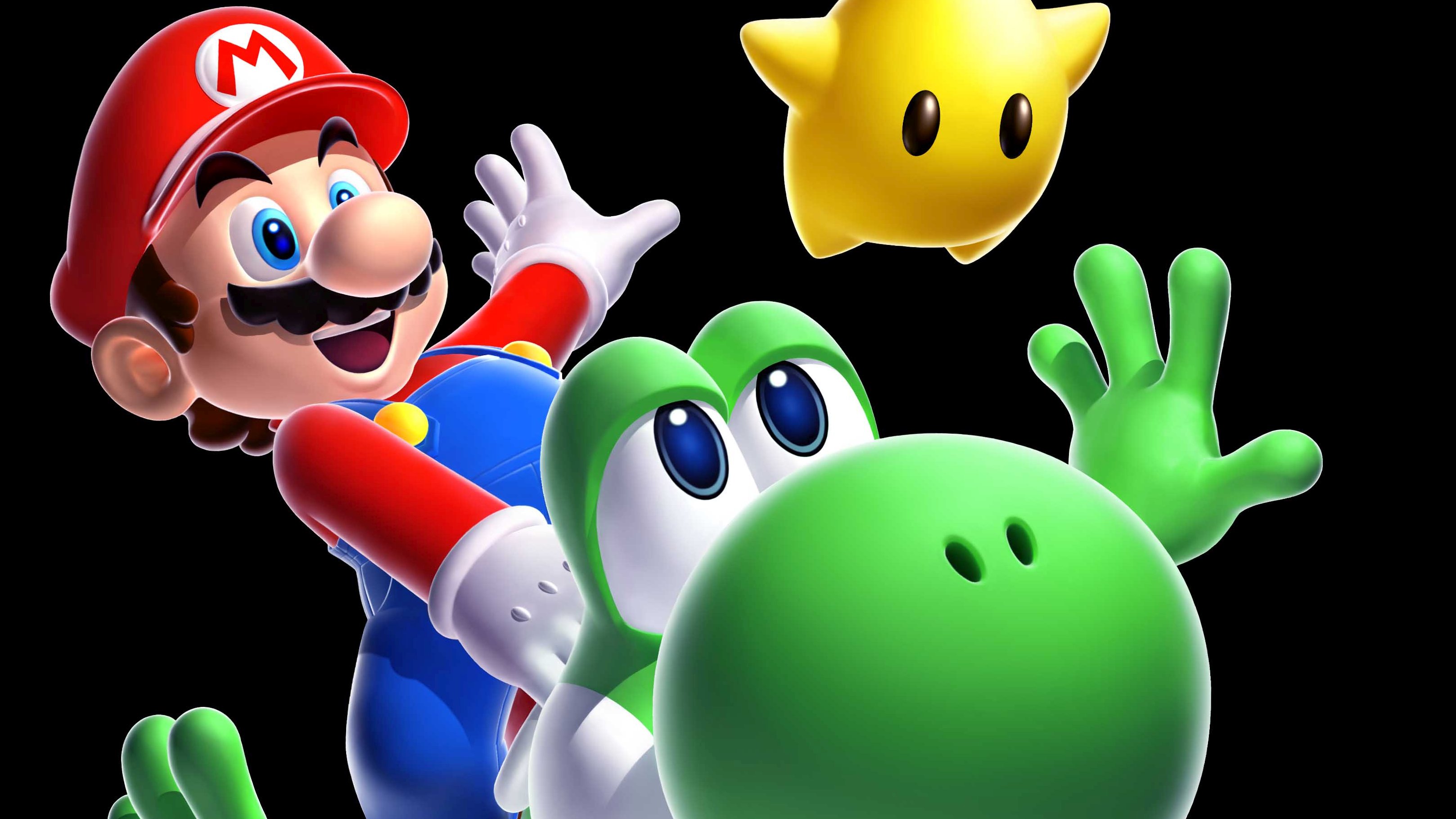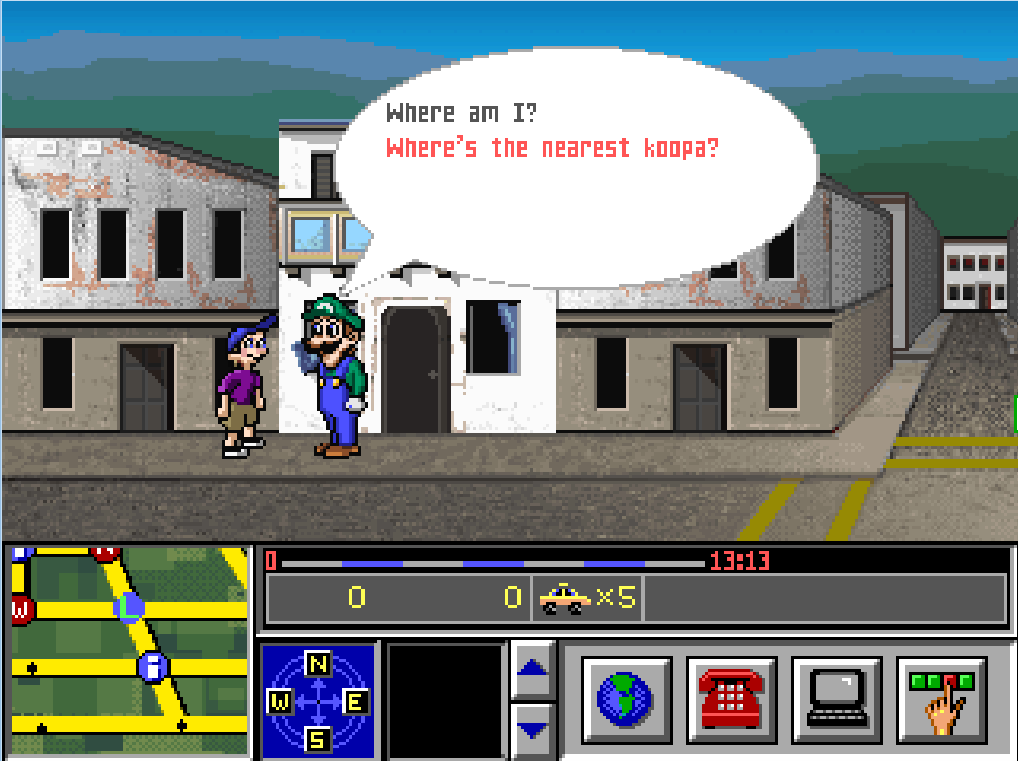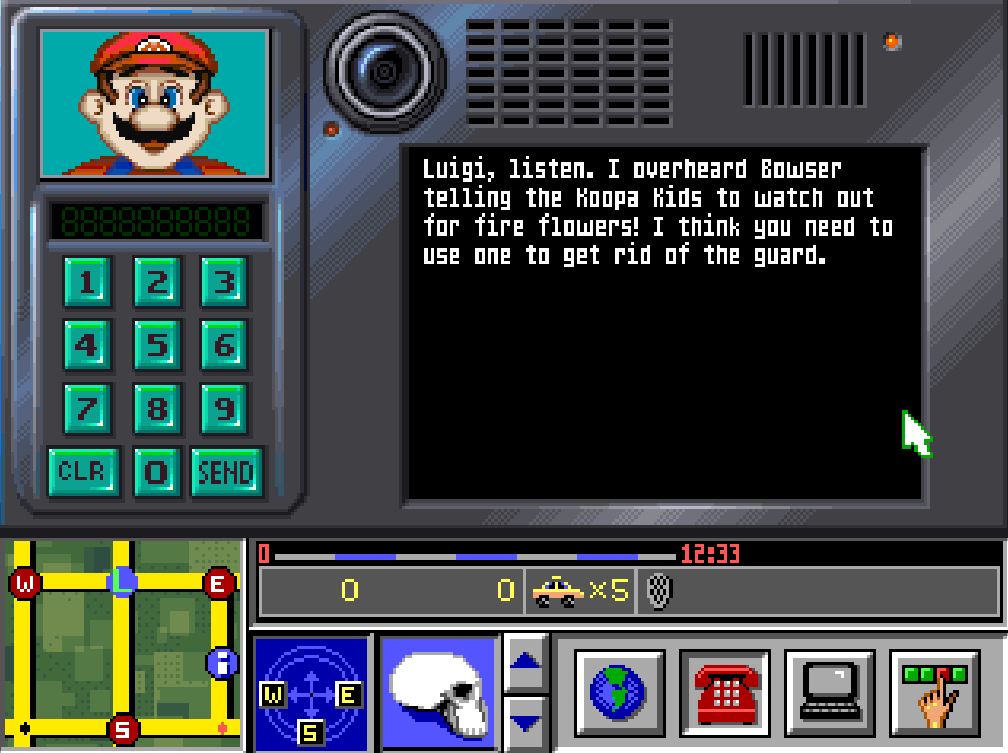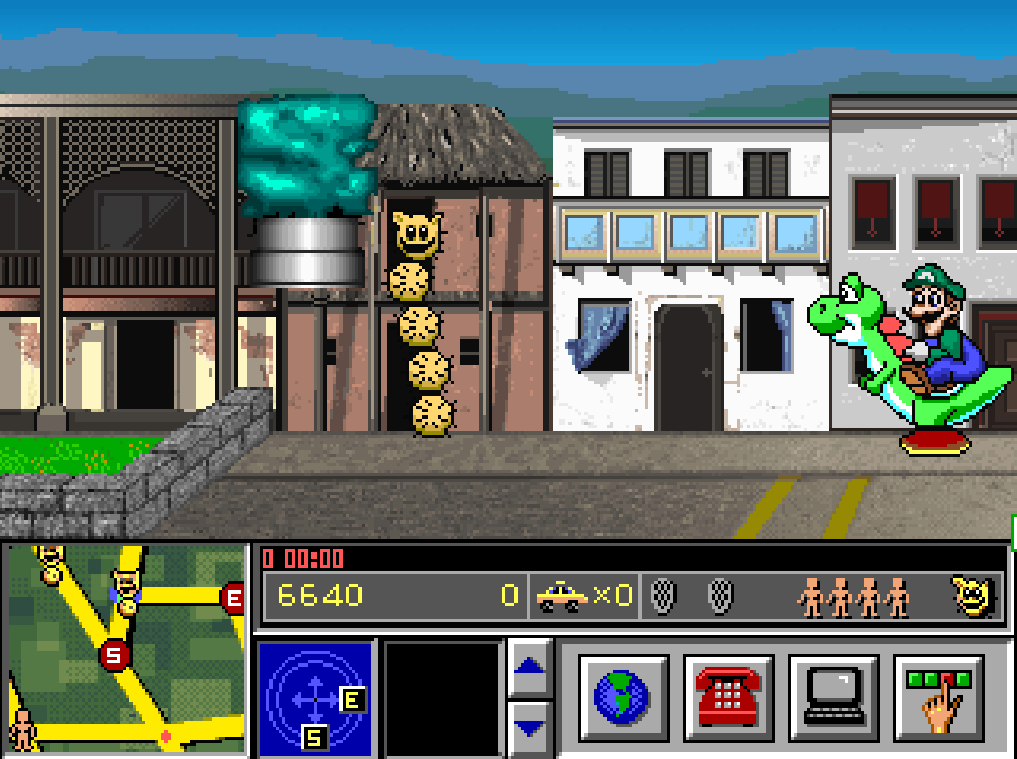The PC Mario game that time forgot
How PC gamers got the worst of Nintendo's iconic plumber.

What was the first game you ever played on PC? It probably wasn’t a game featuring Nintendo’s most popular plumber. Mine was. Mario Is Missing—an old educational game that came bundled with a PC my mum bought in the early 1990s—sees Luigi trying to free the captive Mario by retrieving real-world artefacts stolen by the koopa troopers. To do this, he has to warp to real-life cities and track the koopas down. This point-and-click game is conceptually baffling and hated by Nintendo fans. Nonetheless, this was the basis of my perception of Mario for a decade.
Luigi has to wander around a city hunting the koopas down, with the help of directions from NPCs. When you find one of Bowser’s minions walking across the screen, you click on them to make them drop a bag of swag then run away. Inside each bag is one of several cultural artefacts that need to be returned to the relevant landmarks throughout the surrounding city. In Nairobi, for example, Luigi chases koopas who have stolen a baby elephant, a human skull (!) and a menu from the Kenyatta International Conference Centre. How did the koopa fit an entire elephant inside a bag? This part is unclear, but the good people of Nairobi sure seem delighted to have him back.
I would guess that most people who got into PC gaming during the ‘90s encountered ‘edutainment’ games in one form or another. Whether through a misguided attempt by overly earnest parents to combine learning and fun, or because they came taped to the front of a magazine on a floppy disc. They had more of a place in the pre-Steam days when choices were limited to whatever could be found on shop shelves.

What’s particularly interesting about Mario Is Missing is the way it smuggled Nintendo's most iconic character, at the height of his SNES fame, onto the PC via the medium of a dreadful point-and-click adventure game. None of the classic platformers made it to PC in an official capacity, so for the entirety of the ‘90s, my impression of Mario’s universe—and presumably that of other young players who had Mario Is Missing on PC without owning a Nintendo console—was shaped by this weird little spinoff in which Bowser’s Castle was geographically located in Antarctica.
Nintendo, as I understand it, had little to do with Mario Is Missing beyond licensing it. I wonder what Miyamoto would make of it—that’s a Let’s Play waiting to happen. As a kid, even though the pixelated streets of these major cities repeat themselves endlessly no matter where Luigi ends up in the world, I remember filling in a lot of the gaps myself. It’s like being in San Francisco! Or Marrakesh! Except I want to leave as soon as possible, and every street has the exact same buildings on it, and all the NPCs are exactly the same no matter where I go.
The education element is delivered via tourist information huts, where you learn about the artefacts you're tasked to recover. It's important to memorise this information, because when you call a city representative to return an item they quiz you about locations in the city to ensure you’re the real deal. Some of these questions are too tricky for children, really, and this is presumably why the game took me forever to finish as a kid. Personally I think it’s a bit much to expect a kid to remember that the Kenyatta International Conference Centre is the former headquarters of the UN.
Mario Is Missing is the only game I had on PC until my parents bought a CD drive about two years later, at which time they also upgraded to Windows 95 and bought me X-Wing for Christmas. At that point I jettisoned Mario Is Missing into the bin very hard. It wasn't compatible with Windows 95.
The biggest gaming news, reviews and hardware deals
Keep up to date with the most important stories and the best deals, as picked by the PC Gamer team.

Like most attempts to make learning fun, Mario Is Missing is the sort of thing that would actually turn kids against education from an early age. Especially when the developers don’t seem bothered about accurately portraying the places players visit. Upon arriving in Rome, Luigi receives a phone call from a "Mayor Linguine", which feels like a bit of placeholder text that somebody forgot to swap out.
I don’t remember reaching London, but I assume the prime minister there is called Winston Gravy, and I would guess the president in Washington DC is one George W Hotdog. How about we get Linguine, Rome’s sham of a mayor, to fix this missing artefact business. It’s not Luigi’s business, really. He’s not even sanctioned by the UN, and he doesn’t seem to have a passport.
Confronting a koopa is the only really satisfying interaction in the game. There’s a pleasing ‘gotcha, asshole!’ moment when you find the last koopa in Sydney. You confront this aggressive turtle and then pick up a bag containing a koala bear and carry it back to the zoo. Once Luigi has returned all the missing items to their rightful places, the landmarks reopen and you get to take a picture of them, depicted by a bad bit of pixel art that vaguely approximates the place in question.
After that, the mayor calls Luigi to say thanks, pays him a handsome fee and wishes him luck with freeing Mario. You then summon Yoshi to pick you up, and head to a portal warp point on the map guarded by familiar Mario foe ‘Pokey’, which is a tower-shaped enemy made of spiky balls in the SNES games. Here, though, because the pixel art is so bad, it really looks more like a pile of hairy testicles. Yoshi swallows Pokey, one bollock at a time, and you’re free to return to Bowser’s castle.

One city in and I’d happily swap the entire game for just World 1-1 in Super Mario Bros. This wasn’t the only educational Mario game on PC—there was also Mario Teaches Typing and Mario’s Game Gallery, the latter of which apparently featured Mario versions of dominoes and backgammon (how riveting). There are plenty of signs Mario is Missing wasn’t made by Nintendo—in the opening cutscene that shows the brothers wandering to Bowser’s castle, Mario makes reference to giving Bowser the "old Brooklyn one-two". You never hear Mario threatening to deploy regional fighting moves these days.
Mario Is Missing was nonetheless a fascinating entry point for that series on PC that has irreparably shaped my perception of this Nintendo icon for over two decades now. Never mind Luigi hunting ghosts, playing tennis or driving a car—he once wandered around Buenos Aires asking citizens where the nearest koopa was so he could retrieve a flute and restore the cultural heritage of a real-life city.
And they say 2013 was the Year of Luigi. Mario is Missing proves it was 1992 all along.


